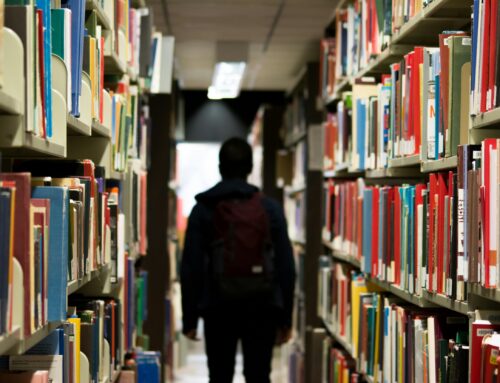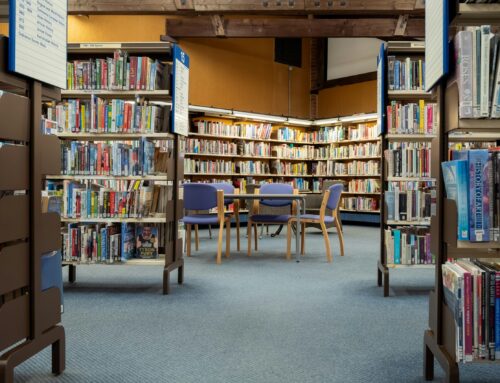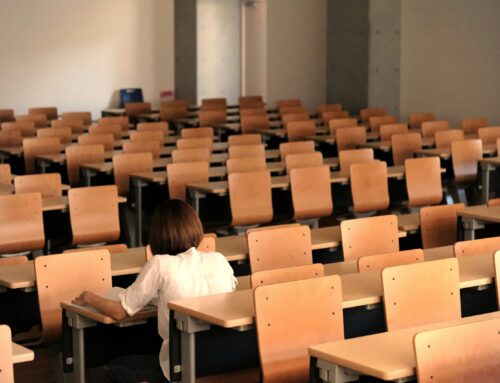 What is a Student Literary Magazine?
What is a Student Literary Magazine?
Firstly, it is crucial to establish what exactly a student-run literary magazine is and what role it can play in students’ lives. In participating in creative writing through a literary magazine, students can learn the value in expressing their authentic voice and build a community as a result.[1] Additionally, there are specific guidelines within these magazines that students must meet to succeed: a strong presence in its creation, a clear concept of the magazine’s mission, and defending publication choices is needed.[1] With these concepts, students can bear responsibilities and take on important tasks, driving them towards aspects of learning achieved through more creative freedoms that serve towards their individual needs. In turn, both students and teachers observe the positive effects that student literary magazines have on “…free expression, social action, and community healing.”[1]
On the topic of the responsibility placed upon students within the creation and sustainment of a literary magazine, they are also required to take on important tasks within editorial roles. For example, in the role of editor in chief, the student must be able to manage other staff members and facilitate other sequential concepts such as advertising for submissions, coordinating the selections for the specific issue and its theme, and then laying out the magazine and making final preparations for publication.[2] Therefore, not only do student literary magazines provide a space for creative freedom and expression, but they also give students the opportunity to have set responsibilities that impact the quality of their task and allow them to contain a greater sense of ownership.
Fostering Creative Freedom and Community
As previously described, a primary element of student literary magazines is in their ability to provide an environment of creative freedom and strong sense of community amongst peers. One specific positive outcome is in the promotion of mental wellness within various communities. Within a student-led literary and arts magazine titled Breathe, the main premise of their platform was to provide a space for creative expression about mental health issues from students that are training within healthcare professions.[3] Some of the common themes relayed within their stories included imposter syndrome and the way they cope with stress outside of the work environment, which helped advocate for improved awareness and gave students a creative outlet to use in combating their main stressors.[3] These elements provide students a means of creative expression and art exposure while working to improve their overall mental well-being simultaneously. The impact this creative medium has on students that desire an outlet of self-expression serves to greatly benefit their well-being and ensure they reap the therapeutic positives of such.
Contained within the element of self-expression is in student literary magazines’ ability to provide marginalized groups such as LGBTQIA+ students with an environment that works to build a community and share experiences through their art. One specific example can be seen within the literary magazine titled Rainbow Vision, where students were able to use the magazine as a way of artistic and creative expression that was promoted throughout their academic environment.[4] The magazine specifically sought out submissions from students and allies associated with the community, thus creating a space that enriched a sense of connection and community, which helped the students feel accepted by their peers within and outside of the community.[4] In the highly-collaborative nature of the magazine, the students worked together and allowed their school officials and peers to observe the progressive impact their art can have on themselves and others.
In fostering the creative freedom of student literary magazines, students are able to discuss topics that question the world around them and provide a space for their authentic voices. One specific article discusses the observations of a teacher that established a literary magazine for his students. In this, they were given a platform to discuss issues of the world around them and bring to light not only the obstacles they observe towards others, but also for themselves. With this platform, the students had the ability to influence school culture and create conversations about important topics like diversity and social justice. [5]
These elements also helped students to connect with one another based on differing cultural backgrounds and specific experiences associated. This explicates the significance in the community-building aspect of student literary magazines, where conveying various cultural identities and creating conversations on social issues gives students the opportunity to connect not only with the literature and its meaning, but with one another, as well. Such also examines the communal effect on the writers within the magazines as well as the readers that engage with the works.
Applying Prior Learning to Writing
Through a more academically structured perspective of the topic, student literary magazines give students the opportunity to apply what they’ve learned within their classes to their writing and editorial skills. Alongside their regular education, these magazines can serve as a supplemental learning opportunity, allowing students additional time to sharpen their writing skills and combine their individual creative processes with more structured writing processes.[6] This in turn provides another opportunity for an overall sense of ownership within such, giving students more confidence in their skills and how they’ve comprehended their rigorous writing instructions, thus improving their real-world application of these concepts.[6]
As mentioned previously, students can take on the role of not only submitting to the literary magazine, but also in taking on editorial roles that facilitate the publication of stories and the overall success of the platform.[2] Such provides another example in a sense of ownership within students, since this position of overseeing the magazine instills responsibility and leadership skills.
Altogether, the various elements of student literary magazines illustrate their positive effect on students creatively, academically, and in the combination of the two concepts together. They provide a platform for self-expression and creativity, means of building a sense of community, and give students extra opportunities for skill-strengthening and applying their academic learning to their creative works. Overall, student literary magazines greatly contribute to the success of student writers.
How Does PSG Fit In?
Here at Publishing Solutions Group, we value platforms like student literary magazines and understand the many positives that they serve towards students. With this in mind, our team collaborates with clients to ensure that student materials are clear and polished, providing students the space to then apply their learned concepts to creative ventures, whether they are through literary magazines or other artistic platforms.
[1] https://doi.org/10.58680/ej202030965
[2] https://doi.org/10.7771/1541-5015.1546
[3] https://doi.org/10.1192/bji.2023.40
[4] https://files.eric.ed.gov/fulltext/EJ1438721.pdf
[5] https://publicationsncte.org/docserver/fulltext/ej/110/2/englishjournal30965.pdf?expires=1736197100&id=id&accname=guest&checksum=75C3C9B6EAA7676040C1C1212D4ED3BB
[6] https://ncte.org/blog/2022/07/student-literary-magazines-take-students-writers-authors-2/
Image free to use under the Unsplash License.




